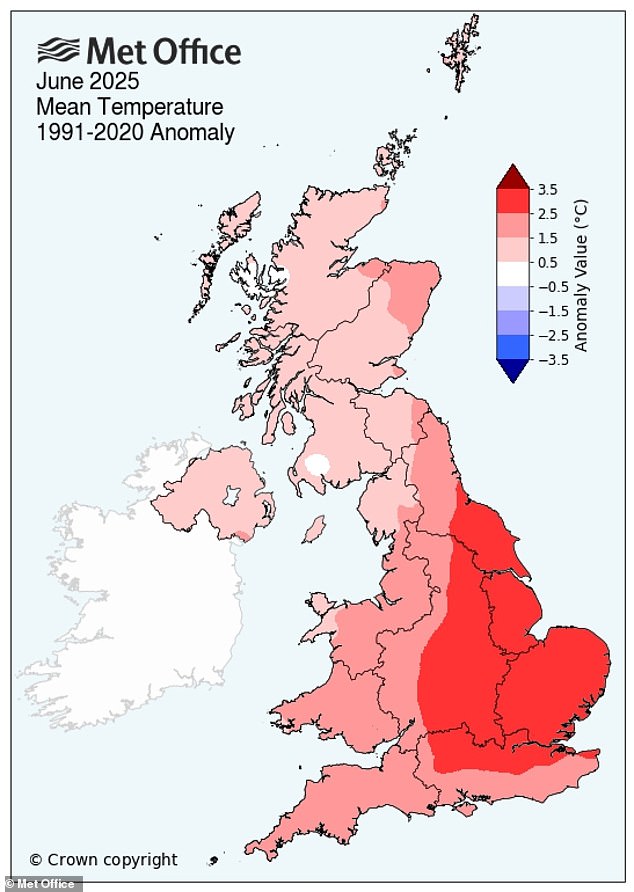In news that will come as no surprise to residents across England, the Met Office has confirmed that last month was England’s hottest June on record.
Average temperatures hit a balmy 16.9°C – the highest recorded since the series began in 1884.
Last month was also the second warmest on record for the UK, which saw an average temperature of 15.2°C.
The Met Office says it’s ‘virtually certain’ that humans are at least partially to blame for the intense heat.
‘Past studies have shown it is virtually certain that human influence has increased the occurrence and intensity of extreme heat events such as this,’ said Dr Amy Doherty, Met Office Climate Scientist.
‘Numerous climate attribution studies have shown that human influence increased the chance that specific extreme heat events would occur, such as the summer of 2018 and July 2022.
‘Our Met Office climate projections indicate that hot spells will become more frequent in our future climate, particularly over the southeast of the UK.
‘Temperatures are projected to rise in all seasons, but the heat would be most intense in summer.’

In news that will come as no surprise to residents across England, the Met Office has confirmed that last month was England’s hottest June on record

Average temperatures in England hit a balmy 16.9°C – the highest recorded since the series began in 1884. Pictured: Brighton beach on 30 June
The east and southeast of England were especially hot last month, with East Anglia’s average temperature hitting 3°C above its long-term average.
Across June, two heatwaves were confirmed across England and Wales – one in the third week of the month, and the second closing out the month.
This second heatwave has been more concentrated on the very far south and east of England, according to the Met Office.
As for how this year compares to the infamous summer of 1976, the Met Office says that while last month was hotter, June 1976 remains more notable due to the longevity of the heat.
‘During 1976, multiple locations across England recorded heatwave spells lasting over two weeks,’ the Met Office explained.
Looking ahead, the UK is likely to see more frequent and intense heatwaves, according to the Met Office.
Just last month, the Met Office’s research showed that the chances of hitting 40°C are climbing at pace.
The study, published in the journal Weather, showed that there is now a 50/50 chance of the UK hitting 40°C again in the next 12 years.

Across June, two heatwaves were confirmed across England and Wales – one in the third week of the month, and the second closing out the month. Pictured: London on 20 June
Worryingly, the researchers warn that even hotter temperatures are possible, with a maximum of 46.6°C (115.9°F) now ‘plausible’ in today’s climate.
Lead author Dr Gillian Kay, senior scientist at the Met Office, said: ‘The chance of exceeding 40°C has been rapidly increasing, and it is now over 20 times more likely than it was in the 1960s.
‘Because our climate continues to warm, we can expect the chance to keep rising.
‘We also found that temperatures several degrees higher than we saw in July 2022 are possible in today’s climate.’
Dr Garyfallos Konstantinoudis, research fellow at the Grantham Institute, Imperial College London, called heatwaves ‘silent killers’.
‘Unlike floods or storms, their impact can be invisible,’ he warned.
‘People who die during extreme heat usually have pre-existing health conditions, and heat is rarely recorded as a contributing cause of death.’












